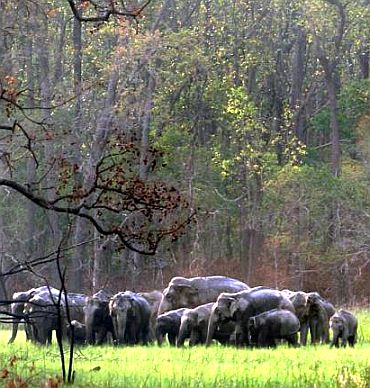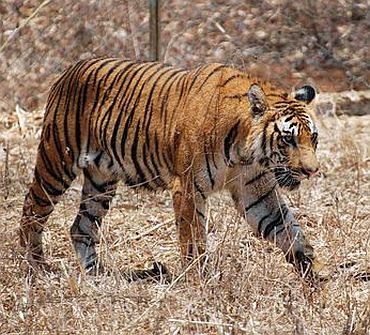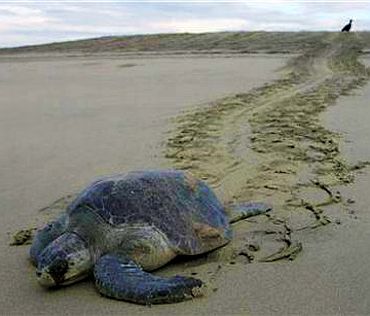
Orissa has lost 570 elephants in the last two decades mainly due to poaching and electrocution.
While poachers have killed 231 elephants during the period, 155 got electrocuted and 339 died due to various other reasons.
Wildlife activist Biswajit Mohanty, however, alleged that at least 386 elephants had died due to electrocution and poaching in the last 19 years because of the "callous" attitude of the authorities.
The recent mass killing of elephants in the protected Simlipal Tiger Reserve shows how local staff concealed and even destroyed bodies of dead elephants, claimed Mohanty.
...

On frequent electrocution of elephants, Forest Secretary Arabindo Behera said, "A close coordination is required between forest and energy departments to avoid such accidental death of elephants."
Chief Minister Naveen Patnaik, who is also in charge of forest and environment, said, "It is a matter of great concern for the state."
Environment and Forest Jairam Ramesh Minister has sought the chief minister's intervention in the issue.
"The state has identified corridors for elephants and chalked out an elephant management plan to ensure that the big animals do not feel threatened," Patnaik said.

Besides the danger being faced by elephants in the state, other wildlife species in Orissa are also facing a threat.
The seizure of 21 leopard skins in April, 1996 on the basis of information given by an NGO also exposed rampant illegal trade in big cat body parts.
In 2005, 11 leopard skins and a pistol were seized from smugglers and poachers in Kandhamal and Gajapati districts, according to official data.
The tiger population of the state has plunged allegedly due to poaching. From 226 tigers in 1993, the state had about 50 in 2008.
Due to onslaught of poachers inside Simlipal, the local tiger population is believed to be almost wiped out with the WII census reporting less than 20 tigers in 2008.

While poachers were active in Orissa's lone National Park at Similipal, the state's Wildlife Crime Cell to tackle growing and rampant wildlife crime remained defunct. There is no dedicated intelligence staff on wildlife crime.
Offenders are rarely convicted in wildlife cases, even when caught red handed. Many cases are pending for more than a decade, Mohanty lamented.
Orissa, housing the world's largest nesting sites for olive ridley sea turtles, also witnessed merciless killing of this rare animals. "More than 1,40,000 turtles were killed during the last 14 years," wildlife activists alleged.
Turtle mortality is mostly due to illegal trawling and failure to use Turtle Excluder Devices, forest officials said.

More than 700 juvenile gharials were released in the Mahanadi river at Satkosia Gorge during the 1970s and early 1980s.
However, two could survive since most of them have been killed for their skins.
Fresh water turtles are regularly smuggled out to West Bengal. 100 fresh water turtles were seized in September, 2010 at the Samantrapur Check Gate after a tip-off by forest staff.
Live snakes are in demand from snake-charmers for display and venom extraction. Skins of cobras and rat snakes are sold to traders for making purses, belts and shoes.
Every year snake-charmers illegally capture thousands of live snakes from crop fields and jungles.

Despite allegations that snake-charmers at Patia village near Bhubaneswar had at least 1,000 live snakes including pythons and king cobras in their possession, not a single raid was conducted by the forest department.
Live birds like parakeets, hornbills, hill mynas, waterfowl, munias are trapped and sold for various purposes.
The grey hornbill is sold for medicinal purposes at prices ranging from Rs 1,000-1,500 per bird.
Bird poaching in Chilika Lake has declined in recent years due to increased patrolling and enforcement by local forest officials, claimed Ajit Kumar Patnaik, director Chilika Development Authority.